BY
It was early September and pouring rain when my friend John and I hopped aboard a time machine and traveled back into the 17th century.
I had arrived in America’s Historic Triangle, Tidewater Virginia’s Jamestown, Williamsburg, and Yorktown. To prepare for the journey, I had looked at online sites, read a book with some thumbnail sketches of these colonial settlements, and recorded notes from my investigations.
Despite these preparations, the next three days delivered a package of surprises I never anticipated.
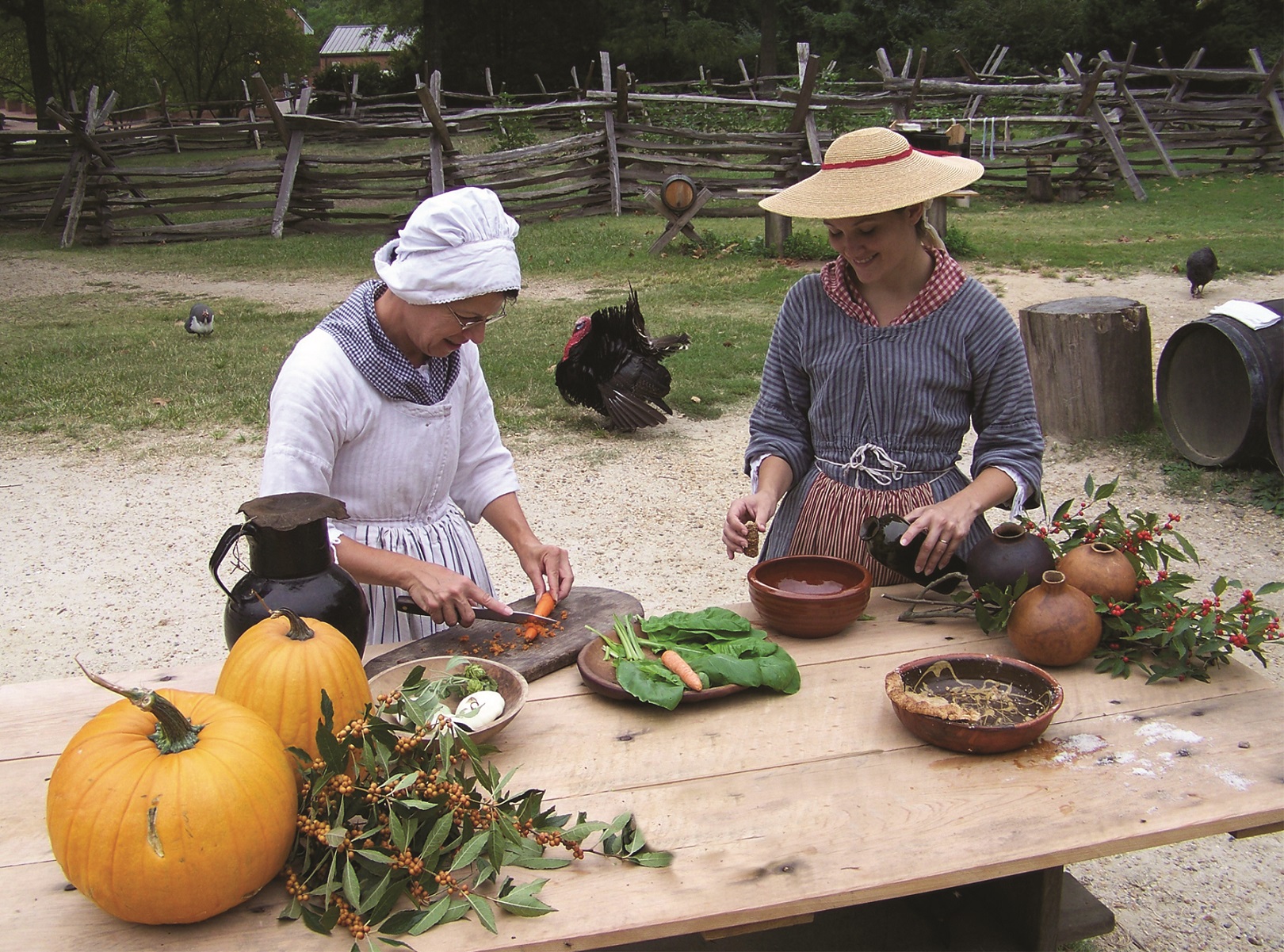
American Revolution Museum at Yorktown. (Courtesy of Visit Williamsburg)
Jamestown Highlights
On our arrival at the Jamestown Settlement Museum, Tracy Perkins guided us through room after room of wonderful galleries, rooms, and hallways depicting the lives of the Native Americans, Europeans, and Africans who lived here in the 1600s, including a slosh through the rain to see the outdoor displays. (Note to self: We barely scratched the surface of these 30,000-square-feet of exhibitions. Some day I need to return to the museum and absorb its history lessons.)
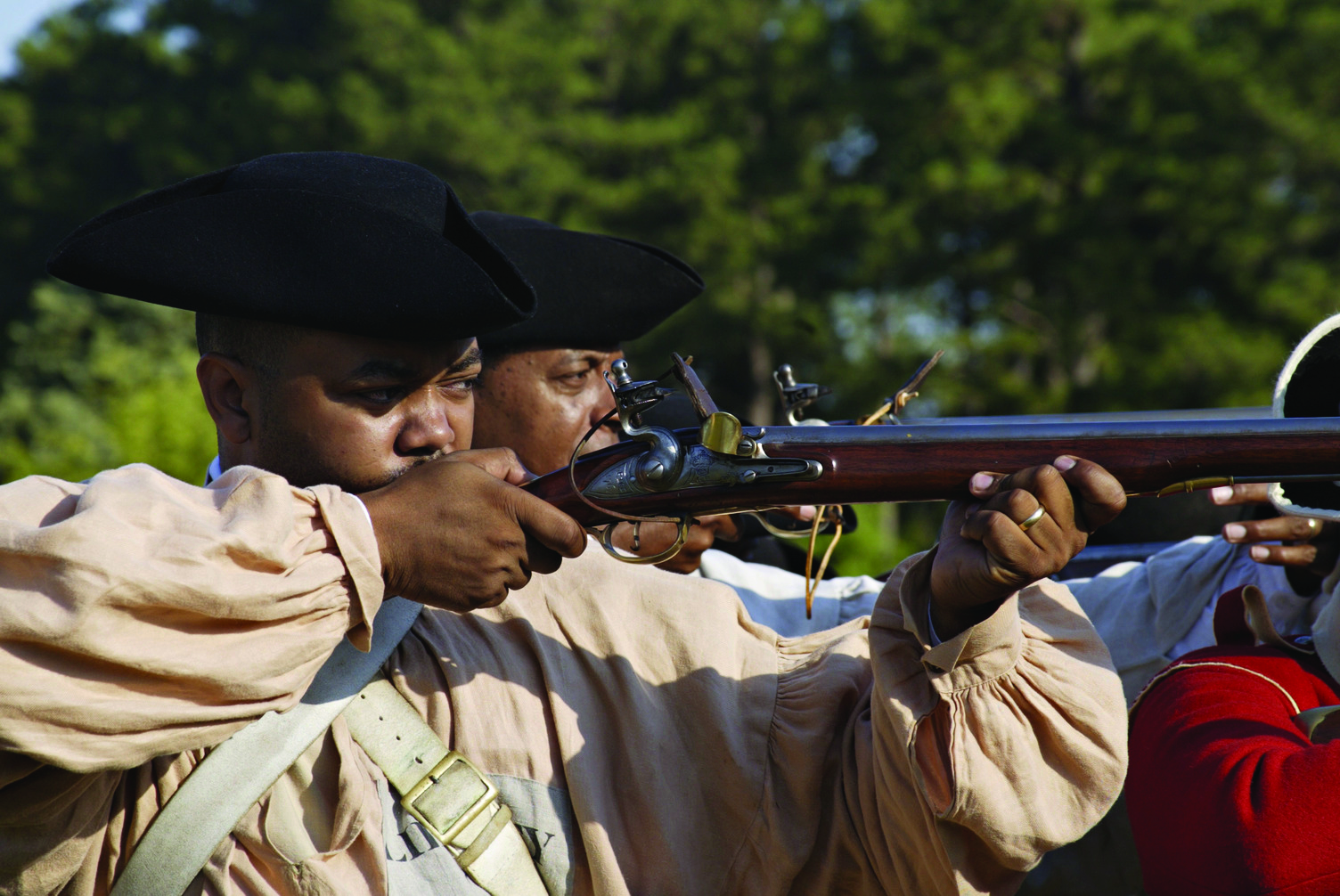
A soldier aims his musket. (Courtesy of Visit Williamsburg)
In a special gallery upstairs, we also viewed the 18th National Exhibition of the American Society of Marine Artists, where we found magnificent works of marine paintings, sculptures, and scrimshaw carvings, a display open to the public through Nov. 9. Many of these works can be found at the museum’s online site.
Of particular interest was the Powhatan Indian Village, where a young man and woman were making bows and arrows just as the Powhatan had once done. As the man worked, he explained everything, from the type of stone used for arrows to the shape and pull of the bow.
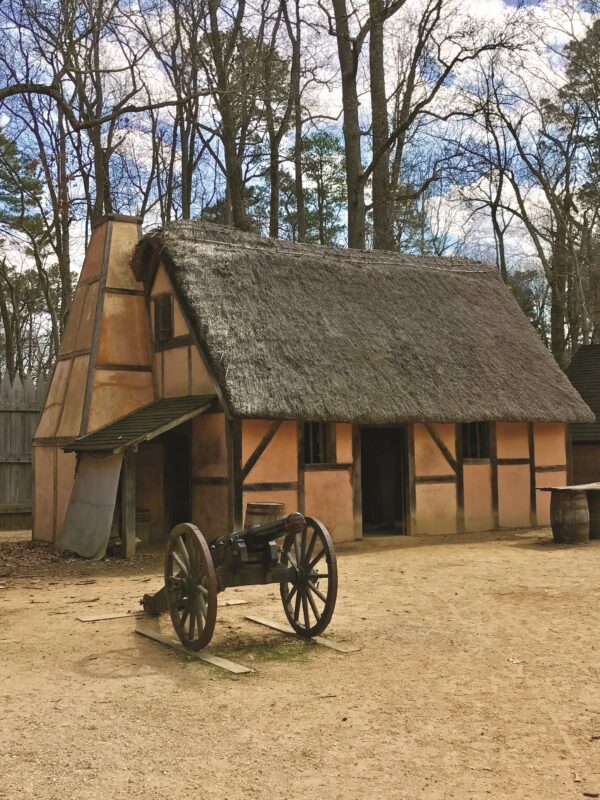
Jamestown Settlement. (Courtesy of Visit Williamsburg)
Next stop was Historic Jamestowne itself. Here Dave Givens, the head of archaeology, spent over an hour of his time answering my questions, and then walked with us, again in the rain, to the ruins of the old church.
Of all the objects—coins, weapons, religious objects, even foodstuffs—we saw in the Archaearium, repository of on-site finds, most fascinating for me were the three skeletons on display, one of whom was a possible murder victim and one a teenage girl likely cannibalized after her death during the “Starving Time” of 1609–1610. The forensic deductions archaeologists can make from these remains—age, cause of death, rich or poor, even possible professions—astounded me.
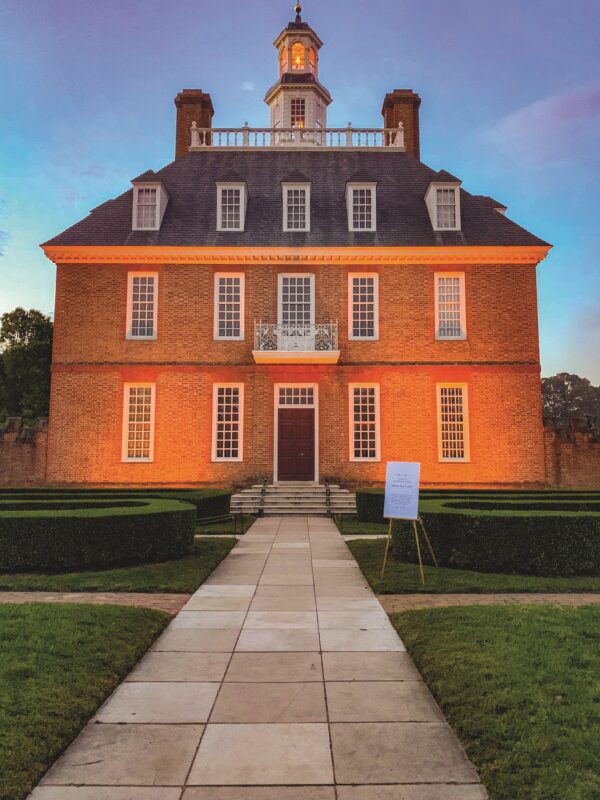
The Governor’s Palace at dusk. (Courtesy of Visit Williamsburg)
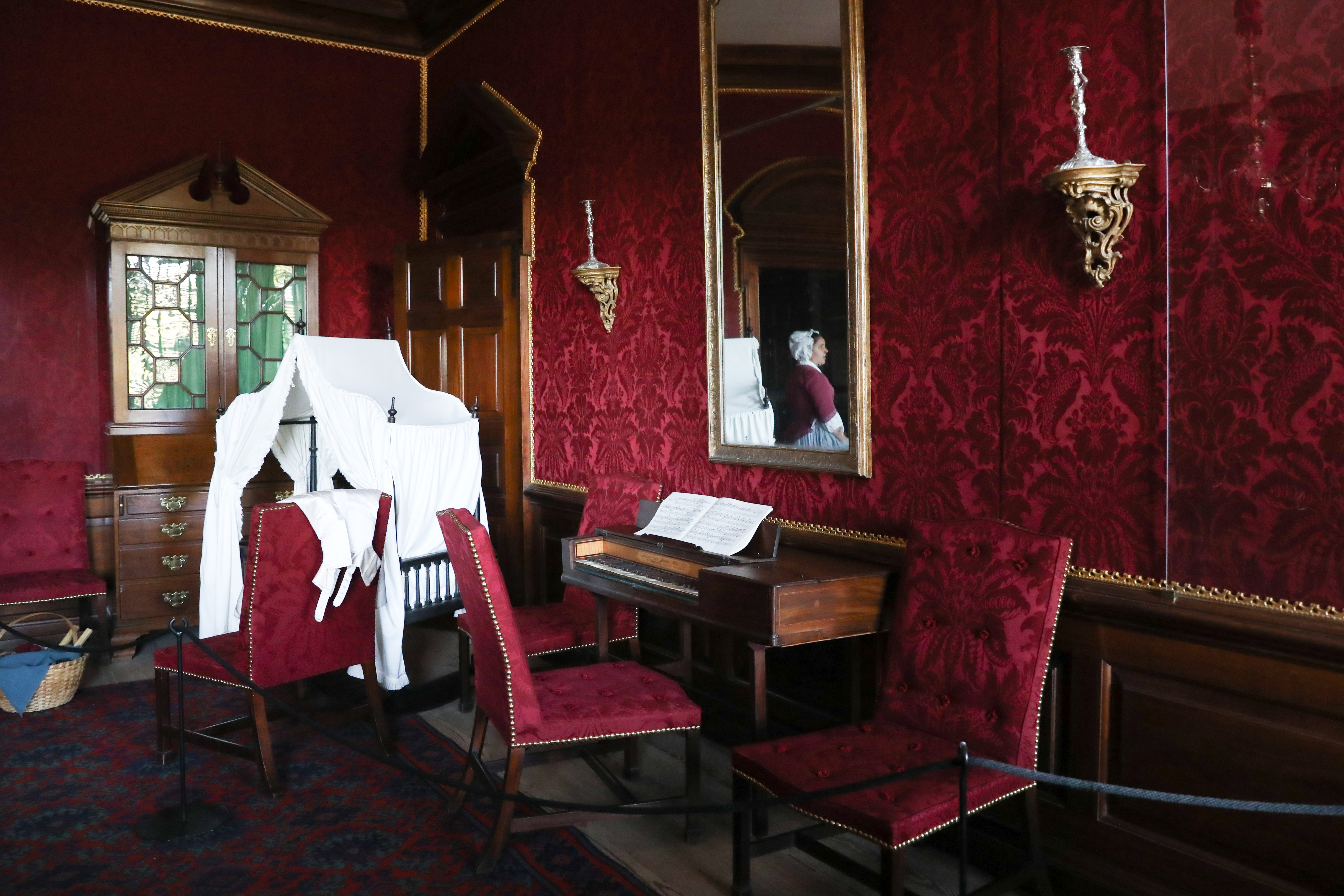
An upstairs room at the Governor’s Palace at Colonial Williamsburg. (Samira Bouaou/The Epoch Times)
Guns and Gardens
The next morning found John and me crossing the street from the Griffin Hotel into Colonial Williamsburg, where we first visited the magazine, the storage depot for powder, shot, and weapons. Here a gentleman in period costume gave a brief talk on colonial firearms, then took a musket, faced to the left, and issued the commands from long ago: “Make ready! Present! Fire!”We saw the spark jump in the powder pan, but no bang.Again he gave the commands—“Make ready! Present! Fire!”—and once more pulled the trigger.No bang.“Third time’s the charm,” he said, and performed his drill yet again.We saw the flash of the spark and thought for a brief moment the gun had again misfired until the deafening explosion caused us all to jump backward.
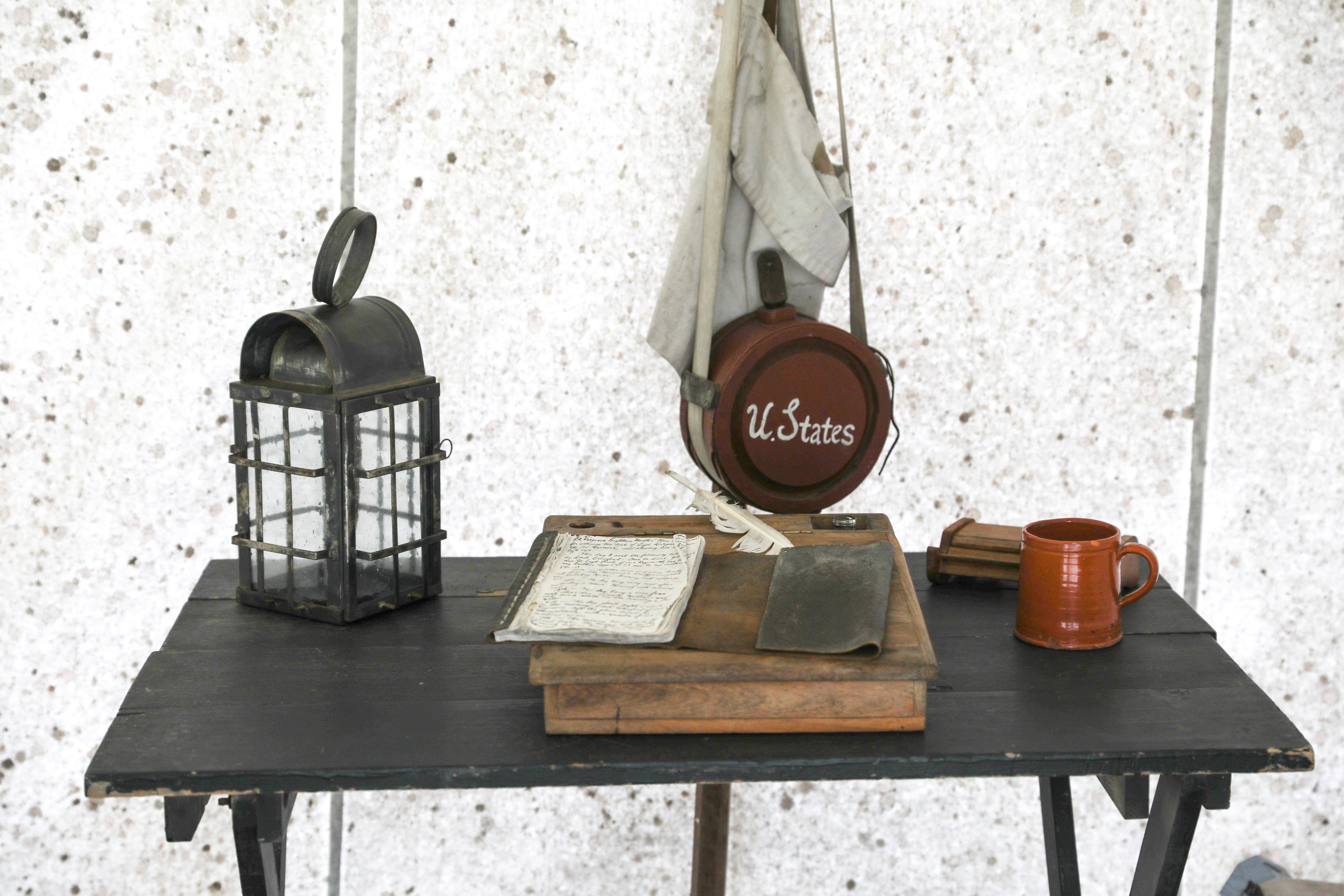
A soldier’s belongings in a tent at the American Revolution Museum at Yorktown. (Samira Bouaou/The Epoch Times)Next up was the Governor’s Palace. Reconstructed in the 1930s, like many other buildings in this town, the palace sports a foyer whose walls are decorated, as they were in colonial times, with hundreds of weapons: 292 swords, 18 pistols, and 230 muskets. We then entered two large chambers that had once served as gathering places for banquets and dances. “Everyone partied until dawn,” our guide said with a laugh. “Virginians back then loved to gossip, and if you left early, you’d be the one they’d talk about.”
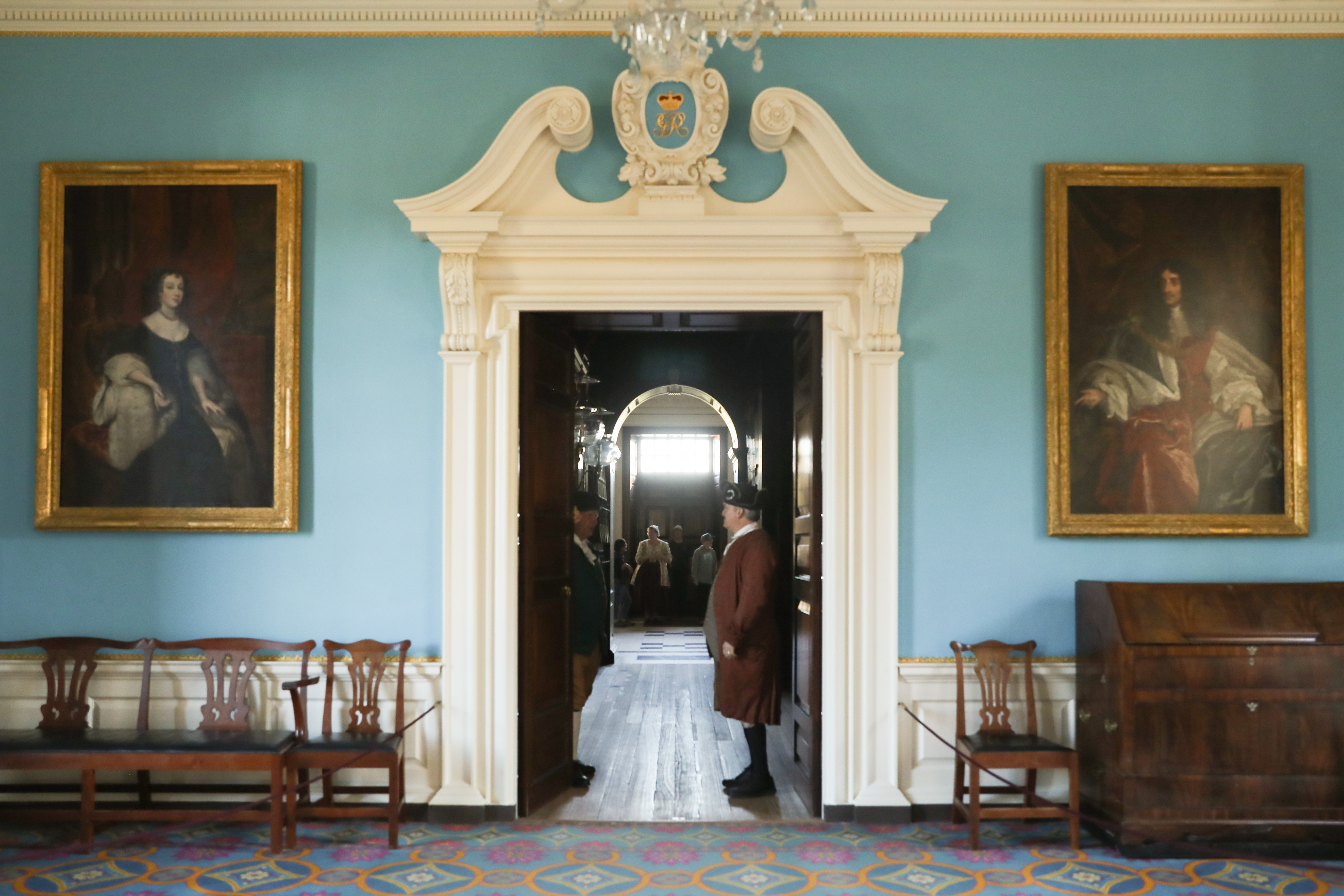
Inside the Governor’s Palace at Colonial Williamsburg. (Samira Bouaou/The Epoch Times)Long ago, as a seventh-grader at Staunton Military Academy, our class had toured Williamsburg. I remembered little of that trip, but as I sat on the steps overlooking the gardens behind the Governor’s Palace, the thought suddenly occurred that my classmates and I had explored a maze in a Williamsburg garden. Just then, John, who had walked to the end of the lawn, shouted, “Hey, there’s a maze over here!”I followed him, entered the pathway into the shrubbery, and shook hands with my 11-year-old self.
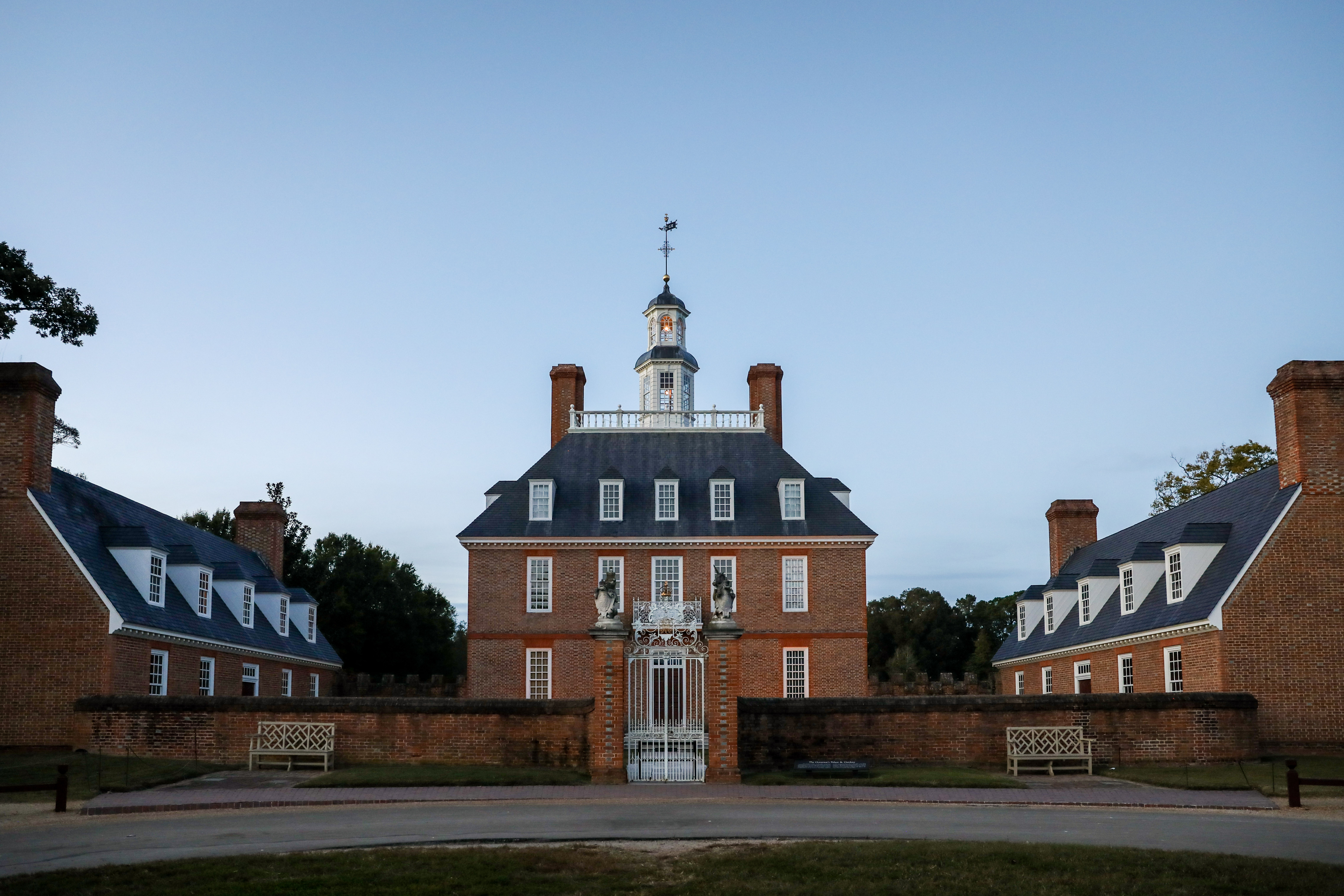
The Governor’s Palace at Colonial Williamsburg. (Samira Bouaou/The Epoch Times)
America’s First and Greatest Victory
The next morning brought us to Yorktown, where French and American forces defeated the army of British Gen. Lord Cornwallis, signaling the beginning of the end of our War for Independence. Josip and Celeste Gucanac, the husband and wife team who operate the Mobjack Bay Coffee Roasters and Petite Cafe at Yorktown, provided me with a delicious cup of coffee and a pastry as well as with two in-house historical guides, Maureen Wiese and Michael Moore, who for two hours walked the town with us explaining various buildings and their stories. Presently, we entered the backyard of the 18th-century Swan Tavern, one of 60 taverns and cafes that had once operated in a town of just 2,000 souls. Seated just across the street from the courthouse, and in the words of guide Michael Moore, the Swan was “the Marriott of its time” and a hotbed for the American Revolution, a gathering place where politicians, lawyers, merchants, and others shared newspapers, broadsheets, and political opinions.
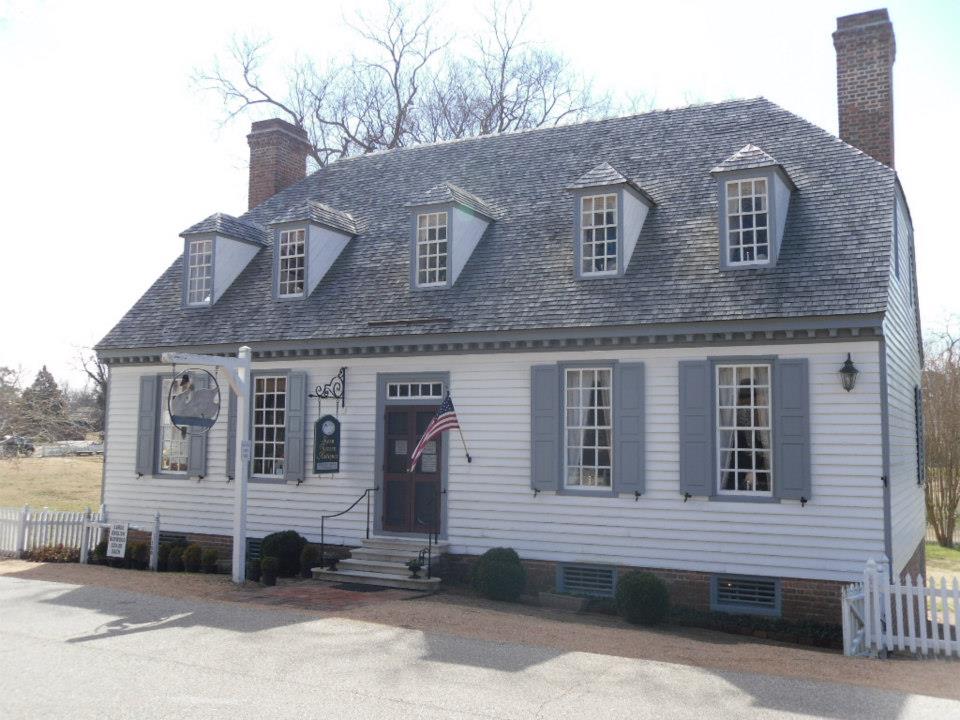
The Swan Tavern in Yorktown. (Courtesy of Visit Williamsburg)Here, for example, is a story told me by Tracy, who also works with the American Revolution Museum at Yorktown. During the battle of Yorktown, a slave, James Armistead, acted as a spy for the Americans by working in the camp of Cornwallis. He got messages through the lines to Gen. Lafayette, information that proved essential to the victory of the French and Americans. After the war, Armistead was returned to servitude, but with Lafayette’s help won his freedom. To honor his French friend and commander, he changed his name to James Armistead Lafayette. In 1824, on a return visit to Virginia, Lafayette recognized his namesake in the crowd in Richmond, ordered his carriage to stop, and hurried to embrace the ex-slave. Afterwards, John and I drove to the battlefield, stopping to walk through the overgrown breastworks and taking a look at Redoubt 10, where Alexander Hamilton won his military fame. 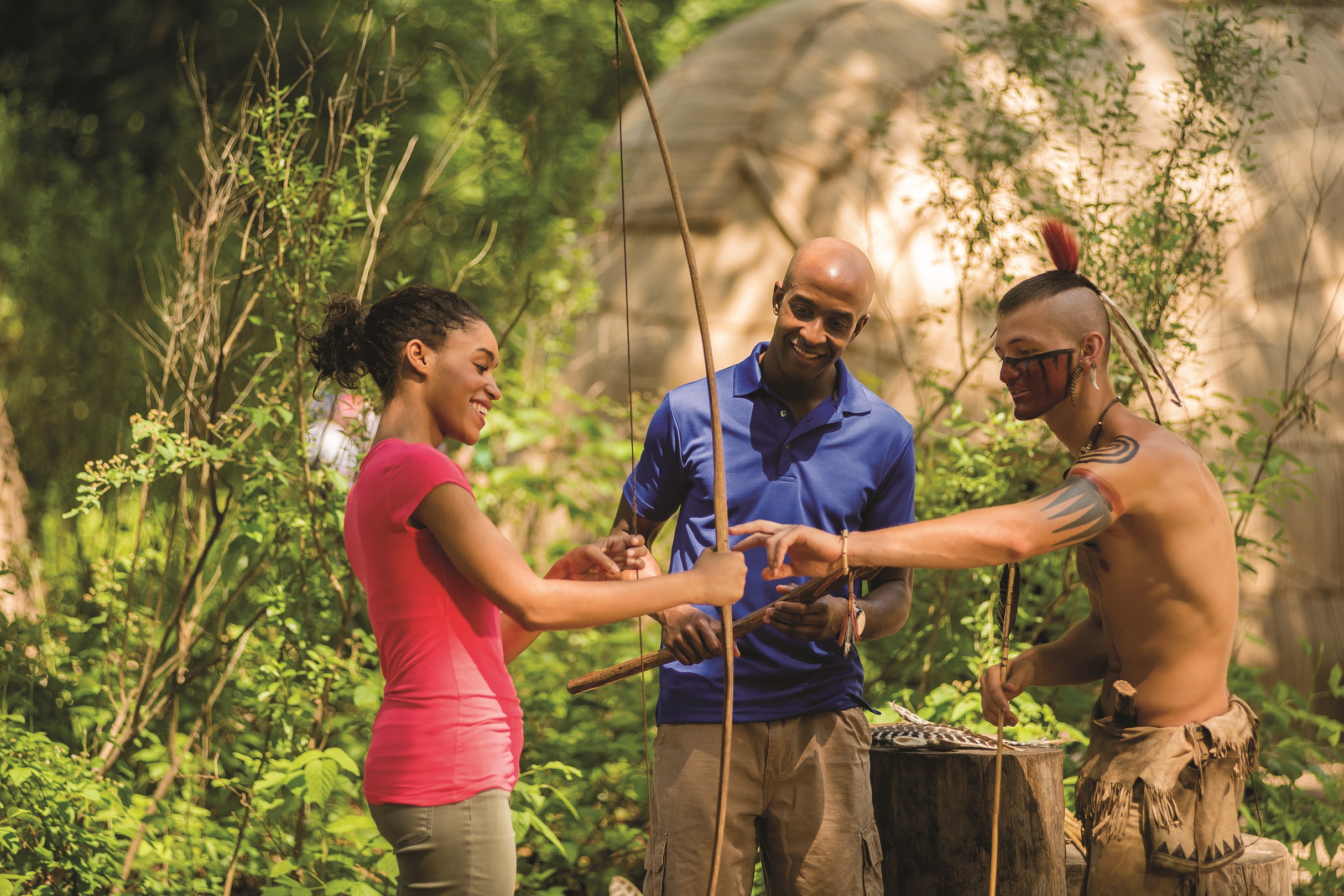
Powhatan Village in Jamestown. (Courtesy of Visit Williamsburg)
American Goodness and a Faith Renewed
Now for some takeaways from this three-day visit:Everywhere we went, we received kindness and good cheer, not just from our guides, but also from the staff at the Griffin Hotel, the waiters and waitresses at establishments such as Ken’s Deli, the Cheese Shop, the Culture Café, and Mobjack Bay, and from the other tourists we encountered. All around us were those optimistic, hard-working Americans—black, white, Hispanic, Asian, old, young, male, and female—who have over the centuries fashioned our nation into a special place.

The woodshop at Colonial Williamsburg. (Samira Bouaou/The Epoch Times)What struck me as well was the knowledge and sense of nuance about our American past exhibited by those we met on our tours. Here were folks who understood the complexities of our country’s history, the tangled light and darkness of our past, and who took pride in their teaching and in their country. In my interactions with these people and with my fellow tourists, I found an antidote, however temporary, to the hatred and division that today poison our headlines and our city streets. The examples of both the dead and the living sent me home with a renewed affection for my country and its dream of “liberty and justice for all.”As Dave Givens remarked of Jamestown during our conversation, “To me this place is home, regardless of what race you are.” The same might be said of our country as a whole. America is home, and we need to love and cherish her.
Jeff Minick has four children and a growing platoon of grandchildren. For 20 years, he taught history, literature, and Latin to seminars of homeschooling students in Asheville, N.C. Today, he lives and writes in Front Royal, Va. See JeffMinick.com to follow his blog.The author was a guest of Visit Williamsburg.
Get Citizensjournal.us Headlines free SUBSCRIPTION. Keep us publishing – DONATE



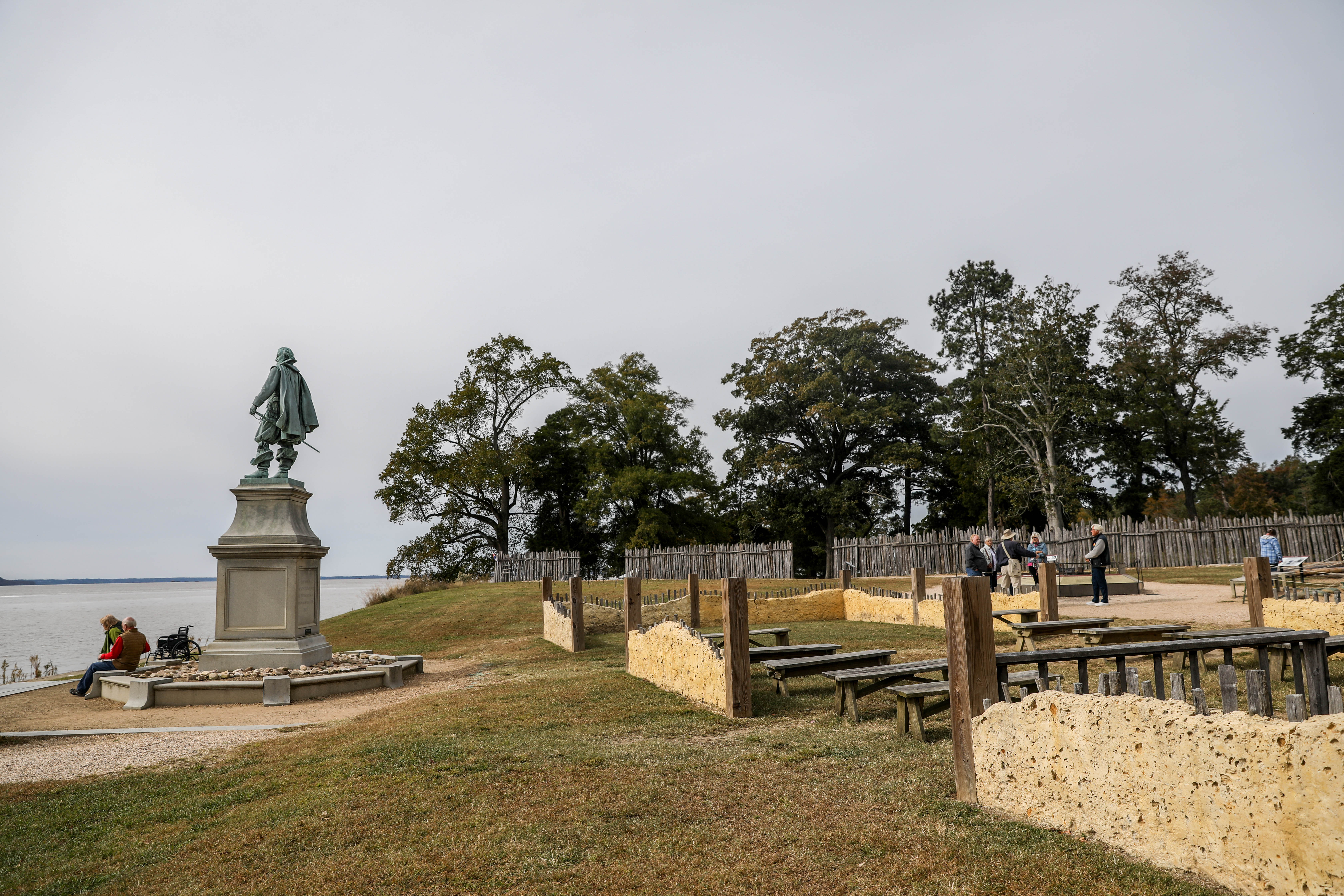


I’ve had the pleasure of being a Chaperone on two occasions, with 8th grade students from Sana Paula. Wonderful memories of outstanding history! A must see!!